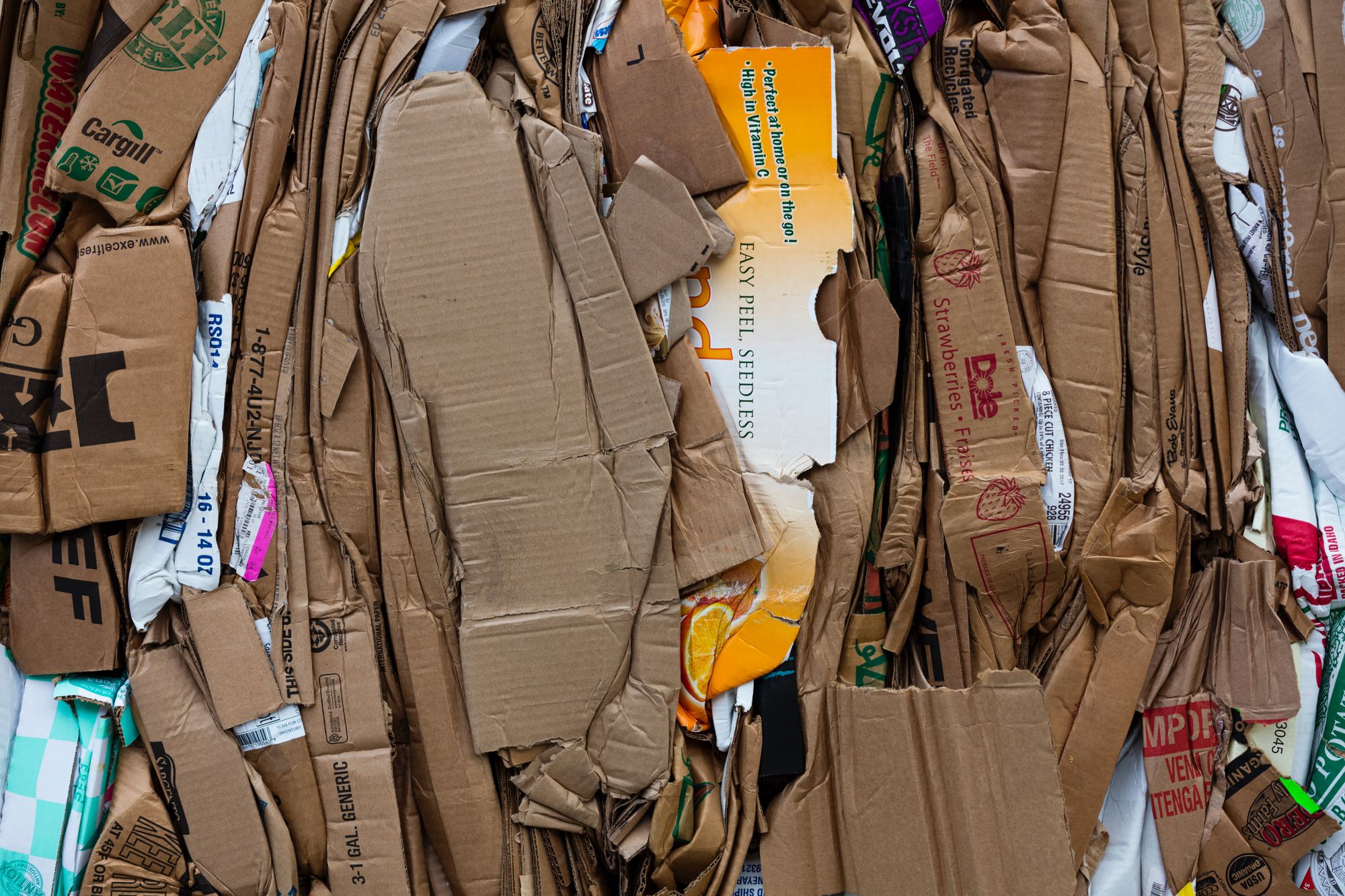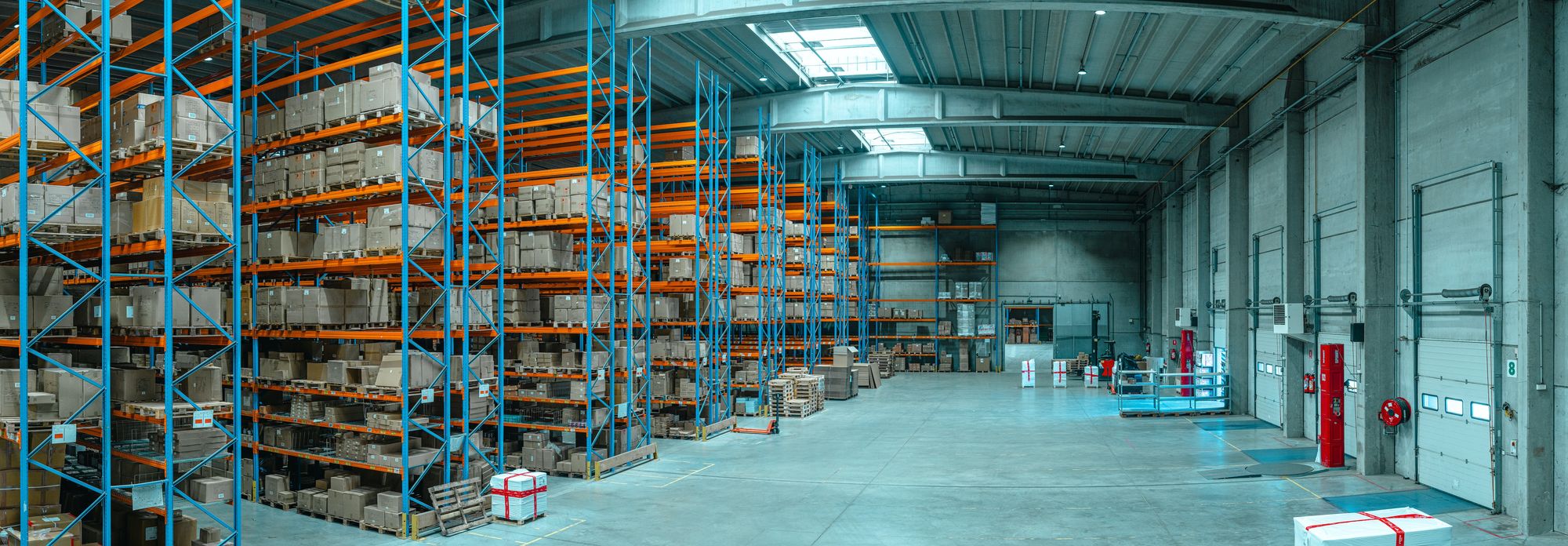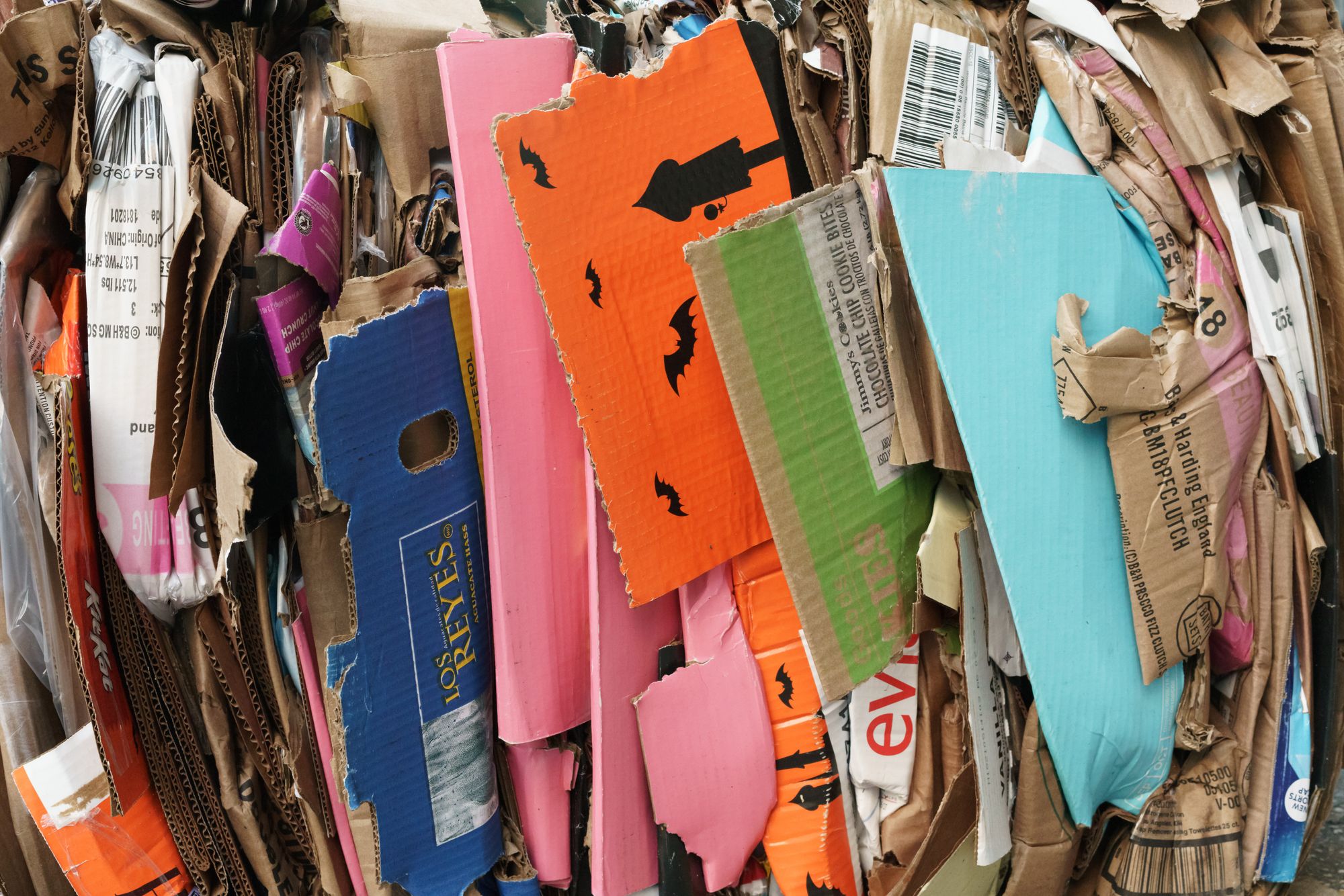In 2020, the global paper recycling rate was approximately 58%, meaning that over half of the paper consumed worldwide was recycled. (Statista)
The use of recycled content in paper products can significantly reduce the environmental impacts of paper production. According to a study by the Environmental Paper Network, if the global paper industry used 100% recycled content, it could reduce greenhouse gas emissions by up to 40%, reduce water use by up to 36%, and reduce energy use by up to 21%. (Environmental Paper Network)

Paper manufacturing and recycling are two important processes that have significant impacts on the environment. Paper is an essential material that is used in various industries, including printing, publishing, packaging, and hygiene products.
However, the process of making paper from trees can have negative environmental impacts, such as deforestation, water pollution, and greenhouse gas emissions. On the other hand, recycling paper can significantly reduce the environmental impacts of paper production, conserve natural resources, and save energy.
The demand for paper products is increasing globally, and it is important to explore sustainable practices in paper manufacturing and recycling to reduce environmental impacts and promote a more circular economy.
This article will provide key takeaways related to paper manufacturing and recycling, highlighting the challenges and opportunities in these industries. It will do so by covering the following topics:
- Paper and its Widespread Use
- History and Process of Paper Manufacturing
- What is Paper Manufacturing?
- What is Paper Recycling?
- Importance of Paper Manufacturing and Recycling
- Types of Paper Commonly Used and Their Properties
- Environmental Impact of Paper Waste
- Benefits of Paper Recycling
- Different Types of Paper Recycling Processes
- Challenges of Paper Recycling
- Innovations in Sustainable Paper Manufacturing and Recycling
- Circular Economy Models for Paper Waste Management
- Regulations and Policies Related to Paper Manufacturing and Recycling
- Industry Initiatives and Collaborations to Reduce Paper Waste
- Future of Paper Manufacturing and Recycling
- Opportunities and Challenges in the Paper Manufacturing Industry
- Opportunities and Challenges in the Paper Recycling Industry
- Potential Solutions and Innovations to Create a More Sustainable Future for Paper
- How can MRP and ERP Systems Help Paper Manufacturers?
- How can Deskera Help with Paper Manufacturing and Recycling?
- Key Takeaways
- Related Articles
Paper and its Widespread Use
Paper is a versatile and widely-used material that is made from fibers extracted from plant-based materials, such as wood pulp, cotton, or recycled paper. It has been used for thousands of years and is an essential material in many industries. Here are some key facts about paper and its widespread use:
- History: The invention of paper is traditionally credited to the Chinese during the Han Dynasty (206 BC - 220 AD), who used hemp and mulberry bark fibers to make paper. Papermaking spread to other parts of the world over the centuries, and by the 19th century, it was being produced in large quantities in Europe and North America.
- Types of Paper: There are many different types of paper available for various applications, including printing and writing paper, packaging paper, tissue paper, and specialty paper, such as artist paper, photographic paper, and security paper.
- Paper Recycling: Recycling paper helps to conserve natural resources, reduce waste, and minimize environmental pollution. The paper recycling process involves collecting used paper products, sorting and cleaning the paper, pulping the paper to break down the fibers, and then creating new paper products.
- Environmental Impact: The widespread use of paper has contributed to deforestation, habitat loss, and other environmental problems. However, sustainable practices in paper manufacturing and recycling can help to minimize these impacts and promote responsible resource management.
- Uses: Paper is used in many industries, including printing and publishing, packaging, art and craft, personal hygiene products, and currency production. It is also used for various purposes in daily life, such as note-taking, writing, and drawing.
The widespread use of paper has led to high demand for paper products, which has contributed to deforestation and other environmental problems.
However, efforts to promote sustainable practices in paper manufacturing and recycling can help to minimize these environmental impacts while still meeting the demand for paper products.
History and Process of Paper Manufacturing
The paper has a long and fascinating history that dates back to ancient times. The process of paper manufacturing has evolved significantly over the years, and today it is a complex industrial process. Here is a brief overview of the history and process of paper manufacturing:
History:
- The first recorded instance of papermaking was in China during the Han Dynasty (206 BC – 220 AD).
- Papermaking spread to the Arab world in the 8th century and then to Europe in the 12th century.
- In the 19th century, the papermaking process became mechanized and was able to produce large quantities of paper.
Process:
- Raw Materials: The primary raw material used in paper manufacturing is wood pulp, which is made by breaking down wood fibers through a chemical or mechanical process. Other raw materials, such as recycled paper and cotton, can also be used.
- Pulping: The raw materials are mixed with water and chemicals to create a pulp mixture. The pulp is then cleaned and screened to remove any impurities.
- Bleaching: If necessary, the pulp may be bleached to remove any remaining impurities and to create a brighter and more uniform color.
- Papermaking: The pulp is fed into a machine called a Fourdrinier machine, which is a long conveyor belt with a series of screens and rollers. The pulp mixture is spread out into a thin layer and dried as it moves through the machine.
- Finishing: The paper is then treated with various chemicals and coatings to improve its properties, such as its brightness, smoothness, and strength. The paper may also be cut and packaged into various sizes and formats.
Overall, the process of paper manufacturing is a complex industrial process that requires the use of specialized equipment and chemical treatments. Sustainable practices in paper manufacturing can help to minimize the environmental impact of this process and promote responsible resource management.
What is Paper Manufacturing?
Paper manufacturing is the process of creating paper and paper-based products from a variety of raw materials, including wood pulp, recycled paper, and other fibers. The paper manufacturing process involves several stages, including pulping, bleaching, pressing, drying, and finishing.
The first stage of paper manufacturing is pulping, where raw materials such as wood chips or recycled paper are broken down into fibers through a chemical or mechanical process. The fibers are then cleaned, refined, and mixed with water to form a slurry.
The slurry is then spread out on a wire mesh screen to create a sheet of wet paper. This sheet is then pressed to remove excess water and dried to create a finished paper product. The paper may then undergo further processing, such as coating, sizing, or printing, to create a desired finish or appearance.
Paper manufacturing can be done on a large scale in industrial facilities or on a smaller scale in craft or artisanal settings. It is an important industry that produces a wide range of products, including books, newspapers, packaging materials, and more.
It is important to consider sustainable practices and environmental impact in paper manufacturing, including responsible sourcing of raw materials and the use of eco-friendly practices in production.
What is Paper Recycling?
Paper recycling is the process of collecting, sorting, and processing used paper products, such as newspapers, magazines, office paper, and cardboard, into new paper products. Recycling paper helps to conserve natural resources, reduce waste, and minimize environmental pollution.
The paper recycling process involves several stages. The first stage is the collection, where used paper products are gathered from homes, businesses, and other sources. The collected paper is then sorted by type and quality, and contaminants such as staples, glue, and plastic are removed.
The sorted paper is then pulped to break down the fibers and remove ink, coatings, and other contaminants. The resulting pulp is then screened and cleaned to remove impurities and create a clean pulp slurry. This clean pulp slurry can be used to create new paper products.
The process of paper recycling involves several steps. Here is an overview of the typical process:
- Collection: Used paper products are collected from homes, offices, and other sources. The paper is sorted into different categories based on its grade, such as newsprint, cardboard, or office paper.
- Sorting: The sorted paper is then transported to a recycling facility, where it is sorted again to remove any contaminants, such as staples or plastic.
- Shredding: The paper is then shredded into small pieces to make it easier to handle in the pulping process.
- Pulping: The shredded paper is mixed with water and chemicals to break it down into a slurry of fibers. This process is called pulping.
- Screening: The slurry is screened to remove any remaining contaminants, such as glue or ink.
- Cleaning and de-inking: The cleaned pulp may be further cleaned and de-inked to remove any remaining ink or other materials.
- Refining: The pulp is then refined to improve its quality and make it suitable for specific paper products.
- Papermaking: The refined pulp is then formed into new paper products using a paper-making machine. The paper is pressed, dried, and rolled to the desired thickness and size.
- Finishing: The finished paper products may then be cut, packaged, and shipped for use in a variety of applications.
Recycling paper saves energy and resources, reduces waste, and helps to preserve natural resources. The process of paper recycling is an important part of sustainable waste management and is essential for protecting the environment.
Recycling paper reduces the need to harvest new trees for paper production, conserving natural resources and reducing the environmental impact of paper production. It also reduces the amount of waste that would otherwise be sent to landfills or incinerators.
Paper recycling can be done on a large scale in recycling facilities or on a smaller scale in homes or businesses. It is an important practice that helps to promote sustainability and protect the environment.
Importance of Paper Manufacturing and Recycling
Both paper manufacturing and recycling are important processes that contribute to the production of paper products used in everyday life, including books, newspapers, packaging materials, and more.
It is important to consider sustainable practices and environmental impact in these processes, including responsible sourcing of raw materials and the use of eco-friendly practices in production and recycling.
Paper manufacturing and recycling are important for several reasons, including:
- Resource Conservation: Paper manufacturing requires raw materials such as wood pulp, which can come from trees. Recycling paper reduces the need to harvest new trees, conserving natural resources.
- Waste Reduction: Recycling paper reduces the amount of waste that would otherwise be sent to landfills or incinerators, reducing the environmental impact of waste disposal.
- Energy Savings: Manufacturing paper from recycled materials requires less energy than manufacturing paper from virgin materials, resulting in lower greenhouse gas emissions and energy consumption.
- Job Creation: Paper manufacturing and recycling industries create jobs and contribute to the economy.
- Environmental Protection: Sustainable practices in paper manufacturing and recycling help to protect the environment by reducing pollution, conserving natural resources, and promoting responsible waste management.
Overall, paper manufacturing and recycling are important practices that contribute to sustainable development, economic growth, and environmental protection. By supporting these practices, individuals and organizations can help to promote sustainability and protect the planet for future generations.
Types of Paper Commonly Used and Their Properties
There are many types of paper commonly used for various purposes, each with its own properties. Here are some of the most common types of paper:
- Bond paper: This type of paper is commonly used for printing business documents, such as letterheads, invoices, and reports. Bond paper is known for its durability and strength.
- Glossy paper: Glossy paper is often used for printing high-quality photographs and images. It has a smooth, shiny finish that makes colors appear bright and vibrant.
- Matte paper: Matte paper has a non-glossy finish and is often used for printing documents or photographs that require a more subdued, sophisticated look.
- Newsprint: Newsprint is the thin, low-cost paper used for printing newspapers. It is known for its low-quality appearance and short lifespan.
- Cardstock: Cardstock is a thick, sturdy paper that is often used for printing business cards, invitations, and other types of printed materials that need to be durable.
- Vellum paper: Vellum paper has a translucent quality and is often used for tracing, drafting, or printing documents that need to be seen through.
- Tissue paper: Tissue paper is thin, delicate, and often used for gift wrapping or crafts.
- Construction paper: Construction paper is thick, colorful, and often used for children's crafts or school projects.
- Watercolor paper: Watercolor paper is thick, textured, and designed to absorb water and paint without tearing or warping.
- Rice paper: Rice paper is a thin, translucent paper made from rice flour and is commonly used for crafts, calligraphy, and art projects.
Each type of paper has its own unique properties that make it suitable for different uses. Understanding the characteristics of different types of paper can help you choose the best one for the specific needs of your buyer personas, which in turn will help you increase your net revenue.
Environmental Impact of Paper Waste
The environmental impact of paper waste can be significant, particularly when a paper is not properly disposed of or recycled. Here are some of the ways that paper waste can impact the environment:
- Landfill Space: When paper is not recycled, it takes up space in landfills, which can lead to a shortage of available landfill space. Landfills can also contribute to pollution and other environmental problems.
- Greenhouse Gas Emissions: When paper waste decomposes in landfills, it produces methane, a potent greenhouse gas that contributes to climate change.
- Deforestation: The production of paper requires the harvesting of trees, which can lead to deforestation and habitat loss for wildlife. Deforestation also contributes to climate change by reducing the amount of carbon that trees can absorb from the atmosphere.
- Water Pollution: The production of paper can lead to water pollution when chemicals used in the manufacturing process are discharged into waterways. This can harm aquatic life and contaminate drinking water sources.
- Energy Consumption: The production of paper requires energy, which can come from non-renewable sources and contribute to greenhouse gas emissions.
To minimize the environmental impact of paper waste, it is important to promote sustainable practices such as reducing paper consumption, using recycled paper products, and properly disposing of paper waste through recycling programs.
Recycling paper helps to conserve natural resources, reduce waste, and minimize environmental pollution. By promoting sustainable practices in paper waste management, we can help to protect the environment and promote a more sustainable future.
Benefits of Paper Recycling
There are many benefits of recycling paper, including the following:
- Conservation of natural resources: Recycling paper conserves trees and other natural resources that are used to make virgin paper. Recycling one ton of paper saves 17 trees, 7,000 gallons of water, and 463 gallons of oil.
- Energy savings: Recycling paper requires less energy than producing virgin paper. The energy savings from recycling one ton of paper is equivalent to the energy needed to power the average American home for six months.
- Reduction of waste: Recycling paper reduces the amount of waste sent to landfills, which helps to conserve valuable landfill space and reduces greenhouse gas emissions.
- Pollution reduction: Recycling paper reduces the amount of pollution generated by the paper production process, including air pollution, water pollution, and greenhouse gas emissions.
- Cost savings: Recycling paper can save money for businesses and municipalities by reducing the costs associated with waste disposal and reducing the need to purchase virgin paper.
- Job creation: Recycling paper creates jobs in the recycling industry and related industries such as transportation and manufacturing.
- Environmental protection: Recycling paper helps to protect the environment by reducing deforestation, conserving natural resources, and reducing greenhouse gas emissions.
In summary, recycling paper has many benefits, including the conservation of natural resources, energy savings, waste reduction, pollution reduction, cost savings, job creation, and environmental protection.
Different Types of Paper Recycling Processes
There are two main types of paper recycling processes: mechanical and chemical.
- Mechanical recycling: In mechanical recycling, used paper is sorted, cleaned, and shredded into small pieces. The paper is then mixed with water and agitated to create a pulp. The pulp is screened and cleaned to remove any contaminants and then pressed and dried to create new paper products. Mechanical recycling is used to make products such as cardboard, newspaper, and tissue paper.
- Chemical recycling: In chemical recycling, used paper is broken down into its component fibers using chemicals. The paper is treated with chemicals to dissolve the bonds between the fibers, creating a pulp. The pulp is then screened, cleaned, and refined to create new paper products. Chemical recycling is used to make products such as high-quality printing and writing paper.
There are also two additional processes that can be used in combination with mechanical and chemical recycling:
- De-inking: In this process, the pulp is treated with chemicals and heat to remove the ink from the paper fibers, making it suitable for producing high-quality paper products.
- Repulping: In this process, a waste paper that has already been through a recycling process is pulped again to create new paper products.
Overall, the recycling process used depends on the type of paper being recycled and the desired quality of the end product. By using a combination of these different recycling processes, a wide variety of paper products can be made from recycled materials, reducing the need for virgin wood pulp and conserving natural resources.
Challenges of Paper Recycling
Although paper recycling offers numerous benefits, there are also some challenges that must be addressed. Some of the key challenges of paper recycling include the following:
- Contamination: Paper that is contaminated with food, grease, or other substances cannot be recycled and can contaminate other recyclable materials. Contamination can reduce the quality of the recycled paper and make it more difficult to process.
- Collection and sorting: Collecting and sorting large amounts of paper can be time-consuming and costly. Many communities lack the infrastructure to collect and sort paper effectively, particularly in developing countries.
- Quality: Recycled paper is often of lower quality than virgin paper, which can limit its use in certain applications. This can make it difficult to compete with virgin paper products in the marketplace.
- Consumer behavior: Consumer behavior can also be a challenge for paper recycling. Many consumers do not understand how to recycle properly and may put non-recyclable materials in recycling bins. This can contaminate the recycling stream and reduce the quality of the recycled paper.
- Cost: Recycling paper can be more expensive than producing virgin paper, particularly when collection and sorting costs are taken into account. This can make it difficult for recycling programs to be financially sustainable.
- Availability of markets: Finally, there may be limited markets for recycled paper products, particularly in regions where virgin paper is cheaper or where there is limited demand for recycled paper products.
Addressing these challenges requires a coordinated effort from governments, businesses, and individuals. This includes educating consumers about how to recycle properly, investing in recycling infrastructure, and creating incentives for businesses to use recycled paper products. By addressing these challenges, we can help to create a more sustainable and efficient paper recycling system.
Innovations in Sustainable Paper Manufacturing and Recycling
There are several innovative approaches to sustainable paper manufacturing and recycling. Some of these include:
- Alternative fibers: One approach to sustainable paper manufacturing is to use alternative fibers, such as bamboo, hemp, and agricultural waste. These fibers can be grown quickly and sustainably and can reduce the demand for virgin wood pulp.
- Closed-loop systems: Closed-loop systems are designed to minimize waste by recycling all materials and energy within the manufacturing process. This can reduce the need for virgin materials and reduce waste and pollution.
- Biodegradable coatings: Biodegradable coatings can be applied to paper products to make them more durable and water-resistant without using harmful chemicals. These coatings can break down naturally in the environment, reducing the environmental impact of paper products.
- Digitalization: Digitalization is reducing the need for paper by making it possible to store and share information electronically. This can reduce the demand for paper and reduce waste and pollution associated with paper production.
- Chemical recycling: Chemical recycling can be used to recover high-quality paper fibers from used paper products that would otherwise be too contaminated for mechanical recycling. This approach can reduce the amount of waste sent to landfills and reduce the demand for virgin wood pulp.
- Upcycling: Upcycling involves using waste paper products to create new products with higher value, such as furniture or art. This approach can reduce waste and provide new revenue streams for recycling programs.
By using these innovative approaches, we can create a more sustainable and efficient paper manufacturing and recycling system. These approaches can reduce the demand for virgin materials, reduce waste and pollution, and create new revenue streams for recycling programs.
Circular Economy Models for Paper Waste Management
Circular economy models aim to keep resources in use for as long as possible and minimize waste by using a closed-loop approach. Here are some circular economy models for paper waste management:
- Closed-loop recycling: Closed-loop recycling involves recycling paper waste into new paper products. This approach minimizes waste and reduces the demand for virgin materials. The paper waste is collected, sorted, and processed into pulp, which is used to make new paper products.
- Upcycling: Upcycling involves using paper waste to create new products with a higher value. For example, paper waste can be used to create furniture, home decor, or art. This approach can create new revenue streams for recycling programs and reduce waste.
- Biogas production: Paper waste can be used to produce biogas through a process called anaerobic digestion. This biogas can be used to generate electricity or heat. This approach can reduce waste and provide renewable energy.
- Material recovery facilities: Material recovery facilities (MRFs) can sort paper waste and separate it from other materials, such as plastics and metals. The paper waste can then be recycled or upcycled, reducing waste and increasing resource efficiency.
- Sharing and reuse: Sharing and reuse models aim to extend the life of paper products by sharing and reusing them. For example, libraries and book-sharing programs can provide access to books, reducing the need for new paper products.
By using these circular economy models, we can reduce waste, increase resource efficiency, and create new revenue streams for recycling programs. These approaches can also help to reduce the environmental impact of paper production and protect natural resources.
Regulations and Policies Related to Paper Manufacturing and Recycling
Regulations and policies related to paper manufacturing and recycling vary by country and region. Here are some examples of regulations and policies related to paper manufacturing and recycling:
- Recycling mandates: Many countries have recycling mandates that require businesses and individuals to recycle a certain percentage of their waste. For example, in the European Union, member states are required to recycle at least 60% of their municipal waste by 2030.
- Extended producer responsibility (EPR): EPR programs require manufacturers to take responsibility for the end-of-life management of their products. In the paper industry, this can include requirements to use recycled materials, design products for recyclability, and support recycling infrastructure.
- Forest management regulations: Forest management regulations aim to protect natural resources and ensure the sustainability of forest products. These regulations can include requirements for sustainable harvesting practices, protection of endangered species, and conservation of biodiversity.
- Environmental certifications: Environmental certifications, such as the Forest Stewardship Council (FSC) and the Programme for the Endorsement of Forest Certification (PEFC), provide assurance that products are produced using sustainable practices. These certifications can be used to support sustainable paper production and promote responsible sourcing.
- Carbon taxes and emissions regulations: Carbon taxes and emissions regulations aim to reduce greenhouse gas emissions and promote cleaner production practices. These regulations can include requirements for emissions reporting, carbon offsets, and investment in clean energy technologies.
By implementing regulations and policies related to paper manufacturing and recycling, governments can promote sustainable production practices, reduce waste and pollution, and protect natural resources. These policies can also help to promote a circular economy and create new revenue streams for recycling programs.
Industry Initiatives and Collaborations to Reduce Paper Waste
There are several industry initiatives and collaborations aimed at reducing paper waste. Here are some examples:
- Paper recycling alliances: Paper recycling alliances, such as the Paper Recovery Alliance and the Recovered Fiber Coalition, bring together stakeholders from across the paper industry to promote paper recycling and increase the demand for recovered paper.
- Sustainable packaging initiatives: Sustainable packaging initiatives, such as the Sustainable Packaging Coalition and the Ellen MacArthur Foundation's New Plastics Economy, aim to reduce the environmental impact of packaging, including paper-based packaging. These initiatives promote sustainable design and materials, recycling and recovery, and circular economy models.
- Green supply chain initiatives: Green supply chains initiatives, such as the Sustainable Packaging Coalition's Forest Products Working Group and the Forest Stewardship Council, promote responsible sourcing practices for paper products. These initiatives help to ensure that paper products are produced using sustainable practices and support the protection of natural resources.
- Circular economy collaborations: Collaborations between paper manufacturers, recyclers, and waste management companies can promote circular economy models for paper waste management. For example, the Closed Loop Partners' Center for the Circular Economy works with industry partners to develop closed-loop systems for paper and other materials.
- Education and awareness campaigns: Education and awareness campaigns can promote paper waste reduction and recycling among businesses and consumers. These campaigns can include information about recycling programs, sustainable packaging alternatives, and the benefits of using recycled paper products.
By working together through industry initiatives and collaborations, stakeholders in the paper industry can promote sustainable production practices, reduce waste and pollution, and protect natural resources. These collaborations can also help to create new revenue streams and support a circular economy model for paper waste management.
Future of Paper Manufacturing and Recycling
The future of paper manufacturing and recycling is likely to be shaped by advances in technology, changes in consumer behavior, and increased awareness of environmental sustainability. Here are some potential trends and developments that may shape the future of paper manufacturing and recycling:
- Digitalization and paperless systems: The rise of digital technologies and paperless systems is likely to reduce the demand for paper products, especially in industries such as publishing and printing. This trend may reduce the overall demand for paper manufacturing, but it may also increase the need for paper recycling programs to manage the growing volume of paper waste from other sources.
- Sustainable production practices: Sustainable production practices, such as using renewable energy, reducing emissions, and minimizing waste, are likely to become increasingly important in the paper industry. Companies that adopt sustainable practices may have a competitive advantage and may be better positioned to meet evolving consumer demand for environmentally-friendly products.
- Circular economy models: Circular economy models, such as closed-loop recycling and upcycling, are likely to become more prevalent in the paper industry. These models can help to reduce waste, increase resource efficiency, and create new revenue streams for recycling programs.
- Innovative materials and packaging: The development of new materials and packaging alternatives, such as biodegradable and compostable materials, may reduce the environmental impact of paper products and increase their sustainability.
- Increased collaboration and partnerships: Collaboration and partnerships between stakeholders in the paper industry, including manufacturers, recyclers, waste management companies, and policymakers, may become increasingly important to promote sustainable production and recycling practices and to support the development of a circular economy model for paper waste management.
Overall, the future of paper manufacturing and recycling is likely to be shaped by the growing demand for sustainable production practices, circular economy models, and innovative materials and packaging alternatives.
Opportunities and Challenges in the Paper Manufacturing Industry
Opportunities in the Paper Manufacturing Industry:
- Sustainable Production: The growing demand for environmentally-friendly products is driving the adoption of sustainable production practices, which offer an opportunity for the paper manufacturing industry to differentiate itself and appeal to consumers who value sustainability.
- Digitalization: Advances in digital technology are driving the development of paperless systems and reducing the demand for printed materials. However, this trend also offers an opportunity for the paper manufacturing industry to develop new products, such as packaging materials, that are more sustainable and meet evolving consumer needs.
- Circular Economy: Circular economy models, which prioritize resource efficiency and waste reduction, offer an opportunity for the paper manufacturing industry to create new revenue streams and support sustainable development.
- Innovative Materials: The development of new materials, such as biodegradable and compostable materials, offers an opportunity for the paper manufacturing industry to develop more sustainable products that meet consumer needs.
Challenges in the Paper Manufacturing Industry:
- Environmental Concerns: The paper manufacturing industry has historically been associated with deforestation, water pollution, and greenhouse gas emissions, which have raised environmental concerns among consumers and policymakers.
- Digitalization: Advances in digital technology are reducing the demand for printed materials, which poses a challenge for the paper manufacturing industry to adapt to changing consumer needs and maintain profitability.
- Global Competition: The paper manufacturing industry is facing global competition, particularly from low-cost producers in Asia, which is putting pressure on companies to reduce costs and maintain profitability.
- Recycling Challenges: The recycling of paper products can be challenging due to contamination, inconsistent quality, and limited markets for recycled materials, which can limit the viability of recycling programs and create additional waste.
- Raw Material Availability: The availability of raw materials, such as wood fiber and recycled paper, can be impacted by factors such as climate change, deforestation, and global trade policies, which can create uncertainty for the paper manufacturing industry.
Opportunities and Challenges in the Paper Recycling Industry
The paper recycling industry plays an essential role in reducing waste and conserving natural resources. However, it also faces several opportunities and challenges:
Opportunities:
- Growing demand for the recycled paper: As consumers become more environmentally conscious, the demand for recycled paper products has increased. This trend has created new opportunities for companies that specialize in paper recycling and for those that incorporate recycled paper into their products.
- Government policies: Many governments around the world have introduced policies and regulations to promote recycling and waste reduction. This has created a supportive environment for the paper recycling industry to thrive.
- Technological advancements: Advances in technology have made it easier to recycle more types of paper products, which has expanded the range of opportunities for the industry.
Challenges:
- Quality control: Maintaining the quality of the recycled paper can be challenging, as contaminants such as inks, adhesives, and other materials can degrade the paper's quality. This can impact the value and usability of recycled paper.
- Cost competitiveness: The cost of collecting, sorting, and processing recycled paper can be higher than that of producing virgin paper, which can make it difficult for the industry to remain cost-competitive.
- Lack of infrastructure: In some regions, there may be a lack of infrastructure for collecting and processing recycled paper, which can limit the growth of the industry.
- Competition from digital media: As more people shift towards digital media, the demand for paper-based products, including recycled paper, may decline.
In conclusion, the paper recycling industry faces both opportunities and challenges. To remain competitive and sustainable, the industry needs to continue innovating and investing in technology, quality control measures, and infrastructure to reduce costs and improve the quality of recycled paper.
Potential Solutions and Innovations to Create a More Sustainable Future for Paper
There are several potential solutions and innovations that could help create a more sustainable future for the paper industry:
- Adopting sustainable production practices: The paper industry can adopt sustainable production practices such as reducing energy consumption, minimizing waste, using renewable resources, and implementing closed-loop systems to minimize environmental impact.
- Increasing recycling rates: One of the most effective ways to reduce the environmental impact of paper production is to increase recycling rates. This can be achieved by improving collection and sorting systems, developing new markets for recycled paper, and investing in technologies that enable the efficient recycling of paper products.
- Developing alternative materials: The paper industry can develop alternative materials such as bioplastics, which are biodegradable and compostable and can replace traditional petroleum-based plastics. This would not only reduce the environmental impact of plastic but also provide an alternative to paper products.
- Developing sustainable packaging: The paper industry can develop sustainable packaging solutions that use less material, are easily recyclable, and are made from sustainable materials.
- Implementing circular economy models: The paper industry can implement circular economy models that prioritize resource efficiency, reduce waste, and create new revenue streams. This could involve implementing closed-loop recycling systems or upcycling paper waste into new products.
- Encouraging consumer behavior change: The paper industry can encourage consumers to adopt more sustainable behavior by promoting the use of recycled paper products, reducing paper waste, and encouraging digital alternatives.
- Investing in research and development: The paper industry can invest in research and development to develop new technologies and materials that reduce environmental impact and improve sustainability.
Overall, a more sustainable future for the paper industry requires a concerted effort by all stakeholders, including manufacturers, policymakers, waste management companies, and consumers, to adopt sustainable practices, increase recycling rates, and develop innovative solutions that reduce environmental impact.
How can MRP and ERP Systems Help Paper Manufacturers?
MRP (Material Requirements Planning) and ERP (Enterprise Resource Planning) systems can help paper manufacturers in several ways:
- Production Planning: MRP and ERP systems can help paper manufacturers plan production by providing real-time data on inventory levels, production capacity, and customer demand. This allows manufacturers to optimize production schedules and ensure that they have the right materials on hand to meet customer orders.
- Inventory Management: MRP and ERP systems can help paper manufacturers manage inventory by tracking raw materials, work in progress, and finished goods. This helps manufacturers avoid stockouts, reduce inventory holding costs, and minimize waste.
- Supply Chain Management: MRP and ERP systems can help paper manufacturers manage their supply chains by providing real-time data on supplier performance, lead times, and delivery schedules. This helps manufacturers identify potential bottlenecks and develop contingency plans to minimize supply chain disruptions.
- Cost Control: MRP and ERP systems can help paper manufacturers control costs by tracking production costs, labor costs, and overhead costs. This allows manufacturers to identify inefficiencies and take corrective action to reduce costs and improve profitability.
- Quality Control: MRP and ERP systems can help paper manufacturers monitor quality by tracking production processes, inspecting finished goods, and identifying defects. This helps manufacturers improve product quality and customer satisfaction.
- Compliance: MRP and ERP systems can help paper manufacturers comply with environmental, health, and safety regulations by tracking emissions, waste disposal, and chemical usage. This helps manufacturers avoid costly fines and legal liabilities.
Overall, MRP and ERP systems can help paper manufacturers improve operational efficiency, reduce costs, and increase customer satisfaction.
By providing real-time data and automating routine tasks, these systems allow manufacturers to focus on strategic decision-making and innovation.
How can Deskera Help with Paper Manufacturing and Recycling?
Deskera can help paper manufacturing companies in a variety of ways:
- Material Requirements Planning (MRP): Deskera's MRP software can help paper manufacturers plan their production schedules, manage inventory levels, and track raw materials and finished products. This can help paper manufacturers optimize their production processes and reduce waste.
- Sales and Customer Relationship Management (CRM): Deskera's CRM software can help paper manufacturers manage their sales pipelines, track customer interactions, and generate sales forecasts. This can help paper manufacturers improve their customer engagement and increase sales.
- Accounting and Finance Management: Deskera's accounting and finance management software, i.e., Deskera Books, can help paper manufacturers manage their financial transactions, generate financial reports, and track expenses. This can help paper manufacturers streamline their financial processes and improve their financial performance.
- Human Resource Management (HRM): Deskera's People can help paper manufacturers manage their employee data, track attendance and leave, and process payroll. This can help paper manufacturers manage their workforce more efficiently and effectively.
- Business Intelligence (BI): Deskera is a BI software that can help paper manufacturers analyze their data, generate insights, and make informed business decisions. This can help paper manufacturers improve their operational efficiency and drive growth.
Key Takeaways
Key takeaways related to paper manufacturing:
- Paper is typically made from wood pulp, which is obtained by processing trees. This process can have significant environmental impacts, including deforestation and water pollution.
- There are alternative sources of pulp, such as agricultural waste, that can be used to make paper.
- The paper manufacturing process involves several stages, including pulping, bleaching, and drying. Each of these stages requires energy and can produce waste.
- Some paper manufacturers are implementing more sustainable practices, such as using recycled paper, reducing water usage, and using renewable energy sources.
- The demand for paper products is increasing globally, and this trend is likely to continue in the coming years.
Key takeaways related to paper recycling:
- Recycling paper can significantly reduce the environmental impacts associated with paper production. It can reduce the amount of waste sent to landfills, conserve natural resources, and save energy.
- The recycling process involves collecting, sorting, and processing paper into new products. The quality of the recycled paper can vary depending on the type and quality of the original paper.
- There are challenges associated with paper recycling, including contamination, lack of infrastructure, and market demand for recycled paper products.
- Consumers can help improve the quality and quantity of paper recycling by properly disposing of paper products and buying products made from recycled materials.
The importance of paper manufacturing and recycling is:
- Resource conservation
- Waste reduction
- Energy savings
- Job creation
- Environmental protection
The environmental impact of paper waste is:
- Landfill space
- Greenhouse gas emissions
- Deforestation
- Water pollution
- Energy consumption
The benefits of paper recycling are:
- Conservation of natural resources
- Energy savings
- Reduction of waste
- Pollution reduction
- Cost savings
- Job creation
- Environmental protection
The two types of paper recycling processes are:
- Mechanical recycling
- Chemical recycling
The challenges of paper recycling are:
- Contamination
- Collection and sorting
- Quality
- Consumer behavior
- Cost
- Availability of markets
Innovations in sustainable paper manufacturing and recycling are:
- Alternative fibers
- Closed loop systems
- Biodegradable coatings
- Digitalization
- Chemical recycling
- Upcycling
Regulations and policies related to paper manufacturing and recycling are:
- Recycling mandates
- Extended producer responsibility (EPR)
- Forest management regulations
- Environmental certifications
- Carbon taxes and emissions regulations
Overall, Deskera can help paper manufacturers improve productivity, reduce costs, and ensure efficient operations by providing a unified view of the entire production process.
Related Articles











